Brand-name specialty drugs drive largest prices
Brand-name specialty drugs dominate the list of the most expensive drugs in the United States. These medications treat members with chronic, rare, and complex conditions and frequently come with a hefty price tag because they require special handling and close oversight from specialists, and the development and manufacturing costs are spread out over a smaller population.
More than 160 medications are currently available with the potential to exceed $250K cost in annual cost.
Injectable medications for cancer drive high-cost claims, and one-fifth of employers had at least one member with more than $1M in claims, according to recent data released by Sun Life. Spending for autoimmune disorders, oncology, HIV, and multiple sclerosis patients will continue to grow in the next
five years.
Infusions account for six of the drugs on this year’s list. These treatments may cause an allergic reaction and require specialists to monitor the patient while the drug is delivered. The drug manufacturer pipeline will continue to produce more brand-name specialty drugs and gene therapy treatments with
larger price tags that treat rare disease states in the years ahead.
With one in 10 Americans having some rare disease, benefit advisors and plan sponsors must be prepared for the likelihood of a high-cost prescription hitting their plan as they design pharmacy benefit programs.
These are the top 10 most expensive drugs filled at a pharmacy or administered by a healthcare practitioner in the U.S. Drug list price is defined as the pharmaceutical company-assigned official price adjusted for time to create a comparable benchmark.
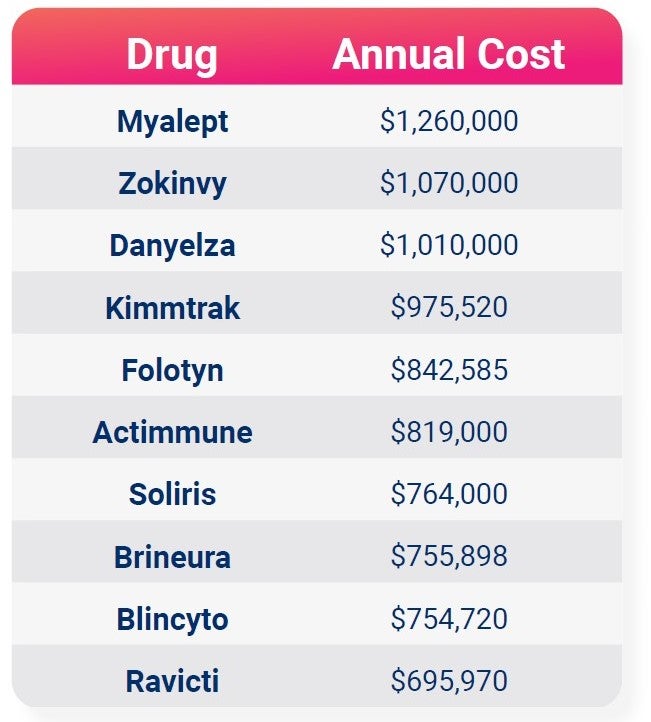
An expensive list of their own: Gene therapies
Three new gene therapies with ultra-expensive price tags launched this year. Combined with Zolgensma and Luxturna, five gene therapies now have price tags greater than $850K. Gene therapy treatments are typically covered on the medical benefit, and these one-time treatments leave many questions for benefit advisors to consider.
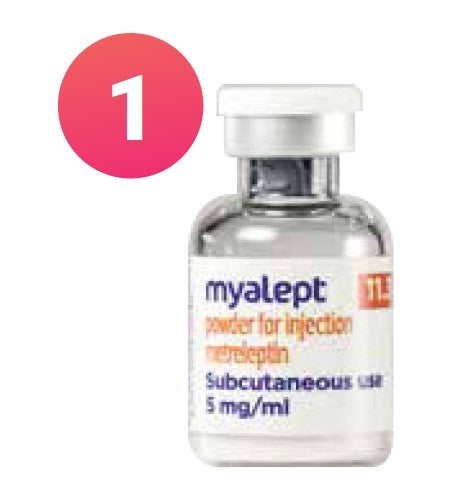
Myalept ($1,260,000)
Myalept is used to treat leptin deficiency in patients with generalized lipodystrophy syndromes. These syndromes are rare – an estimated 1 to 5 cases per million people in the U.S. annually.
Myalept is used to treat a condition of abnormal fat distribution in the body. Patients typically self-administer once a day, using about 14 vials per month. Because Myalept is the only treatment available to control this rare condition, there are no other cost-saving options. To help alleviate some costs, Aegerion Pharmaceuticals offers a copay card to assist commercially insured patients.
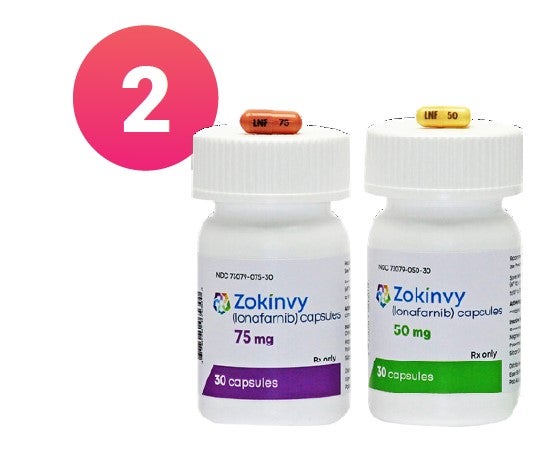
Zokinvy ($1,070,000)
Zokinvy is a drug used in patients one year of age and older to lower the risk of death in hutchinson-gilford progeria syndrome (HGPS). HGPS is a rare disease, reported to occur in 1 in 4 million newborns worldwide, that causes premature aging. Zokinvy is the first and only treatment approved for HGPS. Zokinvy is also used to treat certain types of progeroid laminopathies that are “processing-deficient.”
More than 130 cases of HGPS have been reported in the scientific literature since the condition was first described in 1886. Most patients die before the age of 15 years from heart failure, heart attack, or stroke. Compared to untreated patients, the lifespan of HGPS patients treated with Zokinvy increased by an average of three months through the first three years of treatment and by an average of 2.5 years through the maximum follow-up time of 11 years. Before Zokinvy’s approval, the only treatment options included supportive care and therapies directed toward the complications arising from the disease.
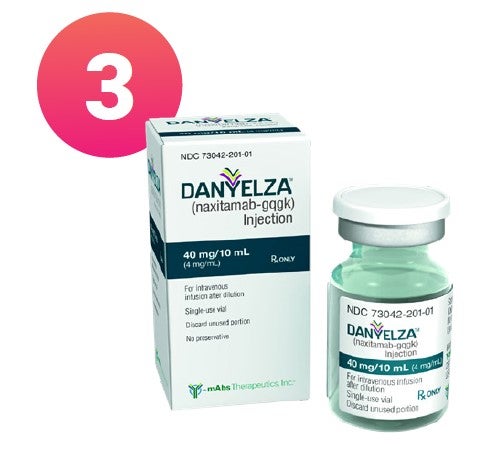
Danyelza ($1,010,000)
Danyelza, approved for medical use in the United States in November 2020, is used to treat a certain type of cancer (neuroblastoma in bone or bone marrow). Danyelza belongs to a class of drugs known as monoclonal antibodies. It works by slowing or stopping the growth of cancer cells.
The incidence of neuroblastoma is 10.2 cases per million children under 15 years of age, and nearly 500 new cases are reported annually. Danyelza is given intravenously by a healthcare professional and is considered an orphan drug — a drug designed to treat to treat diseases or conditions affecting fewer than 200,000 people in the U.S.
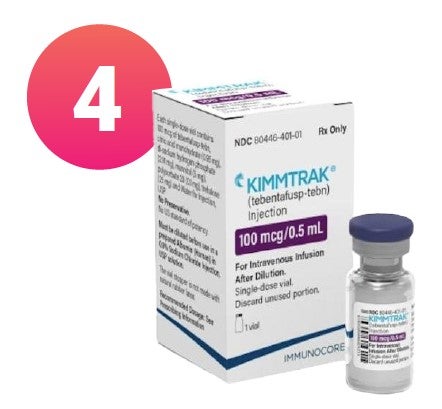
Kimmtrak ($975,520)
Kimmtrak, the only approved treatment for UVLO melanoma HLA-A*02:01 positive, is an immunotherapy delivered through weekly infusions. By using the immune system as a tool to attack cancerous cells, this treatment for adults has improved the overall survival rate of patients by six months, giving them an important extension of time with their loved ones.
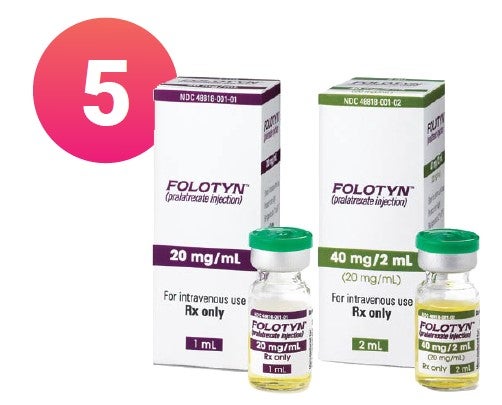
Folotyn ($842,585)
Folotyn is approved to treat peripheral t-cell lymphoma, a rare blood cancer that can cause death. The incidence of peripheral T-cell lymphoma is less than 1 case per 100,000 people in the United States. A healthcare professional administers Folotyn, and patients are typically given 135 vials of the drug annually.
Despite its high price tag, Folotoyn’s effectiveness has been called into question. It has not yet been approved in the E.U. due to insufficient evidence of health gains.
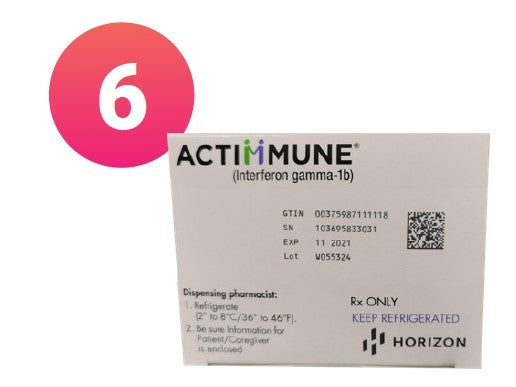
Actimmune ($819,000)
Actimmune is used to treat osteopetrosis. osteopetrosis is a severe, life-threatening genetic disease that causes abnormally dense bones. This is the opposite of osteoporosis, which causes brittle bones. Actimmune is also used to treat chronic granulomatous disease (CGD), which is a genetic condition that prevents some immune cells from fighting infections efficiently. Actimmune is administered three times per week as a subcutaneous (under the skin) injection.
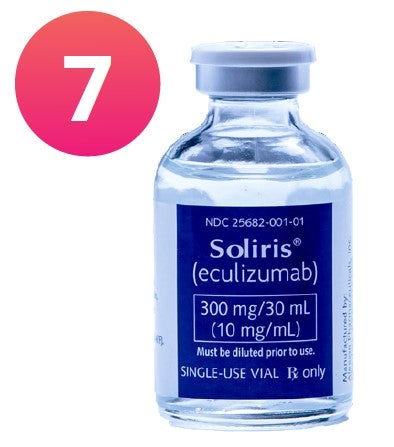
Soliris ($764,000)
Soliris is used to treat the symptoms of paroxysmal nocturnal hemoglobinuria (PNH), hemolytic uremic syndrome (aHUS), generalized myasthenia gravis (gMG), and neuromyelitis optica spectrum disorder (NMOSD). It is a monoclonal antibody used to treat these rare diseases that affect red blood cells. There is a high risk of infection associated with Soliris; the medication is included in a Risk Evaluation and Mitigation Strategy (REMS) program. Soliris can be administered anywhere from once weekly to once every three weeks and is a weight-based medication.
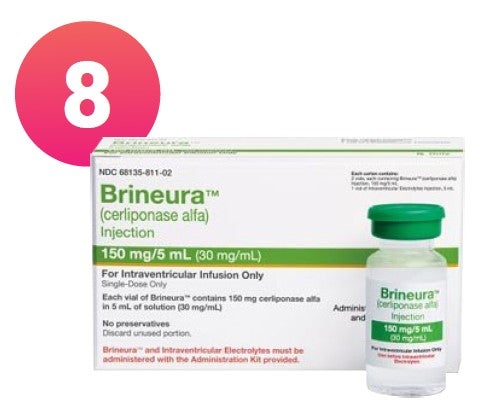
Brineura ($755,898)
Brineura (Cerliponase Alfa) is the first FDA-approved treatment for a form of batten disease, the ultra-rare pediatric brain disorder CLN2 disease that ravages the nervous system and can cause symptoms ranging from seizures, to trouble coordinating muscles, to vision loss. CLN2 disease affects fewer than one in a million people in the U.S., with 20 children born each year with the disorder.
The affected children lose their ability to walk and talk by the age of six, and often die before they reach 12. Brineura is administered into the cerebrospinal fluid (CSF) by infusion via a specific surgically implanted reservoir and catheter in the head. To support early testing for children who experience seizures, BioMarin in partnership with a commercial lab is offering a no-cost genetic testing program called Behind the Seizure.
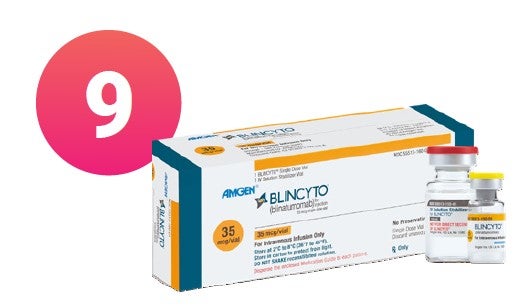
Blincyto ($754,720)
Blincyto, an immunotherapy treatment for CD19-positive B-cell precursor acute lymphoblastic leukemia, is administered continuously over four weeks, followed by treatment-free intervals. ALL is the most common form of leukemia found in children, accounting for about 30% of all pediatric cancer. Children younger than 5 have the highest risk of ALL. Once in adulthood, the general risk of ALL rises after age 50. About 4 out of every 10 people diagnosed with ALL are adults. In the United States, the age-adjusted overall incidence of ALL is 1.5 per 100,000 people, with the highest rate between ages 2 and
5 years and again after age 50.
Each continued therapy cycle consists of four weeks of continuous infusion followed by an eight-week treatment-free interval. Depending on the disease progression, a patient can receive up to four cycles of infusions, or if they have a relapse or refractory period, they receive up to nine cycles. Patients can proceed to transplant at any time after the first cycle.
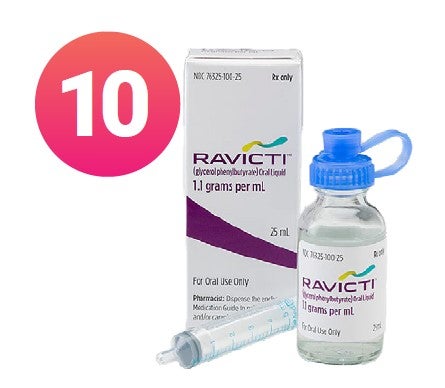
Ravicti ($695,970)
Ravicti is used to treat patients with urea cycle disorders (UCDs). Urea cycle disorders are genetic conditions that cause the harmful buildup of ammonia in the body. If not removed from the body, ammonia buildup can cause mental confusion and even lead to coma or death. Ravicti is administered as an oral liquid and is taken three times a day.
Research compiled from the following sources:
GoodRx.com; Fiercepharma.com; Drugs.com
Fully Optimized Pharmacy Benefits
Employee benefit consultants and self-insured employers trust RxBenefits as a partner in maximizing the plan sponsor’s pharmacy benefits budget while protecting the health and safety of their members. RxBenefits offers consultants a superior alternative to traditional PBM arrangements by providing a comprehensive, multifaceted suite of solutions for layered protection. These solutions include market-leading purchasing power and contract expertise, independent clinical oversight to ensure the pharmacy benefit remains both affordable and accessible, and a world-class service model that provides exceptional care to consultants, employers, and plan members.
